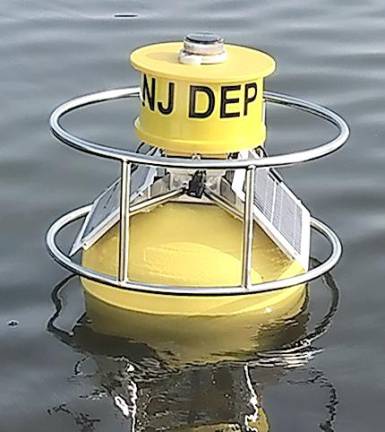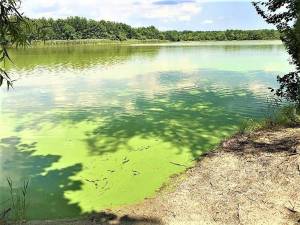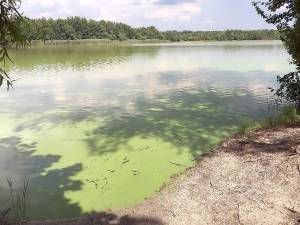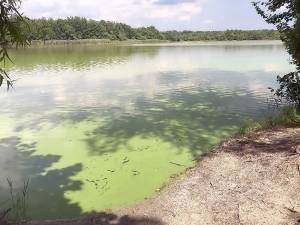DEP, State Police investigate algal buoy vandalism at local lakes
The vandalism has been found at buoys in both Greenwood Lake and Lake Hopatcong.

The New Jersey Department of Environmental Protection (NJDEP) is working with the NJ State Police to investigate the vandalism of harmful algal bloom monitoring buoys in several northern New Jersey lakes, including in Greenwood Lake and Lake Hopatcong. The vandals are reportedly detaching the buoys from anchor lines, Commissioner Shawn M. LaTourette announced on July 14.
“These buoys gather water quality data used to warn the public about harmful algal bloom conditions and improve our long-term understanding of these blooms,” said Commissioner LaTourette. “When someone cuts a buoy free, they are jeopardizing this work and placing boaters, personal watercraft users and other recreational users of the lakes at risk of injury.”
“State Police marine and land-based units have stepped up patrols in the areas of these buoys and we will criminally charge anyone caught tampering with them to the full extent of the law,” said Colonel Patrick J. Callahan, superintendent of the New Jersey State Police. “We are asking for the public’s help in putting a stop to this.”
“As mayors of the Lake Hopatcong communities, we have worked very hard over the last few years and partnered successfully with the NJDEP since the original harmful algal bloom in 2019,” said Jefferson Township Mayor Eric F. Wilsusen. “Monitoring the lake and communicating with the public about water quality issues concerning a potential harmful algal bloom is vital to all to best utilize this valuable resource. Whoever intentionally vandalized the harmful algal bloom monitoring buoys does not have our lake’s best interest in mind and is doing a disservice to the community.”
Since June of this year, there have been two incidents at Lake Hopatcong, and one at Greenwood Lake, according to the NJDEP. There were also two incidents at Lake Hopatcong last summer. In each case, the buoys were recovered.
In addition, the NJDEP has reported three incidents of damage “likely resulting from boats hitting the buoys unintentionally.” The DEP reminds the boating public to be alert to the presence of these buoys. The perimeter of each buoy is marked by safety buoys.
These buoys, maintained by the NJDEP, are part of a comprehensive response to harmful algal blooms in our area lakes. The buoys gather a range of water quality data, including phycocyanin pigments that are indicative of harmful algal blooms, turbidity, salinity, dissolved oxygen, temperature, chlorophyll and pH.
Citing climate change, the NJDEP says harmful algal blooms are caused by cyanobacteria that naturally occur in fresh water and can proliferate to unhealthful levels in sunlight and hot weather, forming dense mats resembling pea soup or spilled paint. Exposure to cyanobacteria cells can cause a range of mild to moderate health effects, including rashes, allergy-like reactions, flu-like symptoms, gastroenteritis, respiratory irritation and eye irritation. Incidental ingestion of water containing the toxins these bacteria can produce, known as cyanotoxins, can result in more serious health effects such as liver toxicity and neurological effects. Children and pets are more vulnerable because they ingest more water in relation to their size.
Anyone with information about these incidents or sees suspicious behavior is urged to contact the State Police at 609-882-2000 or the DEP’s hotline at 877-WARNDEP (877-927-6337).
For more information about harmful algal blooms, visit nj.gov/dep/hab.


